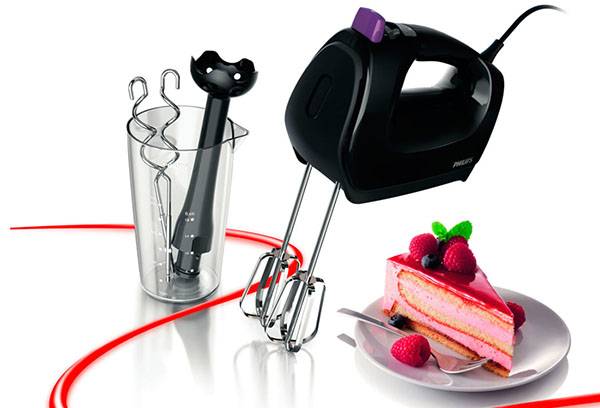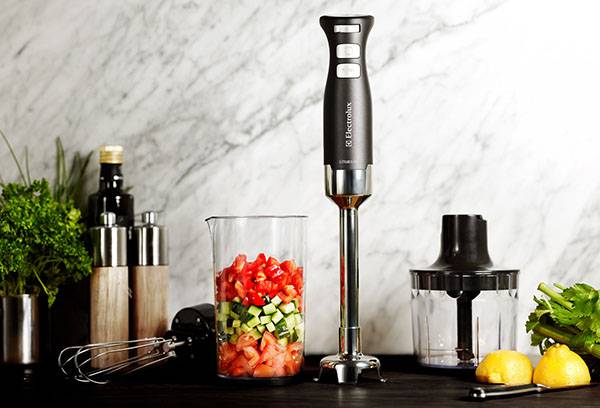Will a blender or mixer be more useful in the kitchen?
Blender and mixer are two very popular household appliances. What is more useful in the kitchen is a difficult question. It is difficult to compare them, because they are created for different purposes and in extremely rare cases are interchangeable. But you can still give priority to one of them: it depends on what dishes you plan to cook most often.

What is the difference between a blender and a mixer?
Imagine for a second that you needed to prepare pancake dough 100 years ago. You would take a fork and use it to stir the ingredients. Already feel how your hand is numb after a few minutes of whipping? The mixer was created just to facilitate and speed up the mixing process and prevent your hand from getting tired. What if you need to beat an egg white? The speed at which you need to work the fork and the time you need to spend on it is intimidating. And the point here is not so much mixing, but rather saturating the mixture with air. A mixer is indispensable for whipping.
And now another situation: you make a sauce from sour cream, herbs, cheese and nuts. First you will have to chop the greens very finely with a knife. Then you will grate the cheese on a fine grater. It is not possible to grind nuts at all except with a hammer or a meat grinder. The result is a mountain of dishes, an hour of wasted time, a tired hand and not the most uniform sauce. But a blender could replace a grater, a knife, and a meat grinder. When mixing with sour cream, he would also replace a fork or spoon. And all this in one container and in one approach!
There is nothing in the pancake batter to chop with a knife or grater, and preparing such a sauce with just a fork would be unrealistic. It turns out that the functionality of a blender is wider than that of a mixer, but in some cases it cannot replace a mixer.
Let's summarize what is the difference between these devices.
Mixer:
- mixes and beats;
- used with liquid or semi-liquid substances;
- can't grind.
Blender:
- grinds and mixes;
- can be used with both liquid and solid and even very solid products;
- beats mediocre.
Advice
To prevent the mixture from spilling when working with an immersion blender and mixer, fill the container only 50-60%.
Which is better to choose?
A mixer and a blender have more differences than similarities, and they even look completely different. Of course, both would be useful in the kitchen, but if you can only buy one appliance, you'll have to think about which is best for you.
The easiest way to do this is to analyze the dishes that are most often prepared using these devices. But here we have to make one clarification: blenders can be submersible and stationary, and, despite the same principle of operation, they will not always be interchangeable.
- Cream soup
The mixer is useless in this case: we have already said that it cannot grind. With a regular blender, you will suffer when preparing, say, 3 liters of soup, because household blenders do not have such large containers. You'll have to chop it up in pieces!
- Mashed potatoes
With regular mashed potatoes, everything is somewhat more complicated: a blender will help chop the potatoes without leaving a single lump in them, but, as practice shows, with an immersion blender it takes longer than mashing by hand, and the result is not that amazing. In addition, you will quickly get tired, and the device may overheat! Even if the potatoes are soft and well boiled: it is still designed to work with substances of less resistance.
A stand mixer will certainly do the job, but how to use a mixer? It can only be used when the potatoes are shredded by hand or in a blender to give them fluffiness!
- Omelette
Since the ingredients for the omelette are liquid, both blenders and a mixer can cope with mixing it. The difference is that an omelette prepared using a mixer will be fluffier, since the products will not only be mixed, but also whipped.
- Batter
The same rule applies here as with an omelette: both devices will cope with the task, just the mixer will make the dough more airy and fluffy.
- Cool dough
But with tight dough, the blender is useless. True, many people refuse to use a mixer with a dough-kneading attachment, remembering their grandmother’s methods and preferring their hands.
- Milkshake
In general, a mixer for cocktails with milk and ice cream is preferable: it makes them airy and foamy. But what if you decide to add banana instead of syrup for flavor? In this case, the mixer will not cope, and you will have to use a blender to mix the liquid part with the solid part. If you still want to achieve a delicate texture, you can beat the already crushed mixture with a whisk.
By the way
In the case of cocktails, it is very convenient to use an immersion blender with an additional whisk attachment, working in two steps: chopping and mixing until smooth, and then whipping.
- Smoothie
The mixer will simply break if you try to crush ice with it. Moreover, not every blender is capable of this without overheating. So smoothie lovers should choose a more powerful blender!
- Mousse, protein, cream
It is better to beat everything that needs to be whipped into foam with a mixer. It’s in confectionery shops that you simply can’t live without it. True, if you are not a very sophisticated cook, a regular blender in some situations can beat the mixture enough to make it not very airy and fluffy, but still a mousse. But with whites to peaks and cream, only a mixer will help.
- Cream
It’s difficult to give a definite answer with creams: there are so many different recipes! But which device will cope brilliantly with their preparation - a blender or a mixer? We advise you to follow this rule: if the cream is planned to be airy and delicate, and all the ingredients for it are liquid or soft, choose a mixer; if the recipe contains solid ingredients, but the cream must be dense, choose a blender.
- Sauce
It all depends on the sauce. If it is a mixture of liquid and soft ingredients like sour cream, ketchup, butter or cottage cheese, then a mixer will do. But it’s still more convenient to use a blender: this way you can also add solid ingredients.
It turns out that most household culinary tasks can be made easier by a blender, and for lovers of pureed soups – an immersion blender. A mixer, especially if the blender has a whisk attachment, is needed only by advanced confectioners who are very sensitive to the quality of whipping.



I read the article, and I’m no longer sure that I even need a mixer.